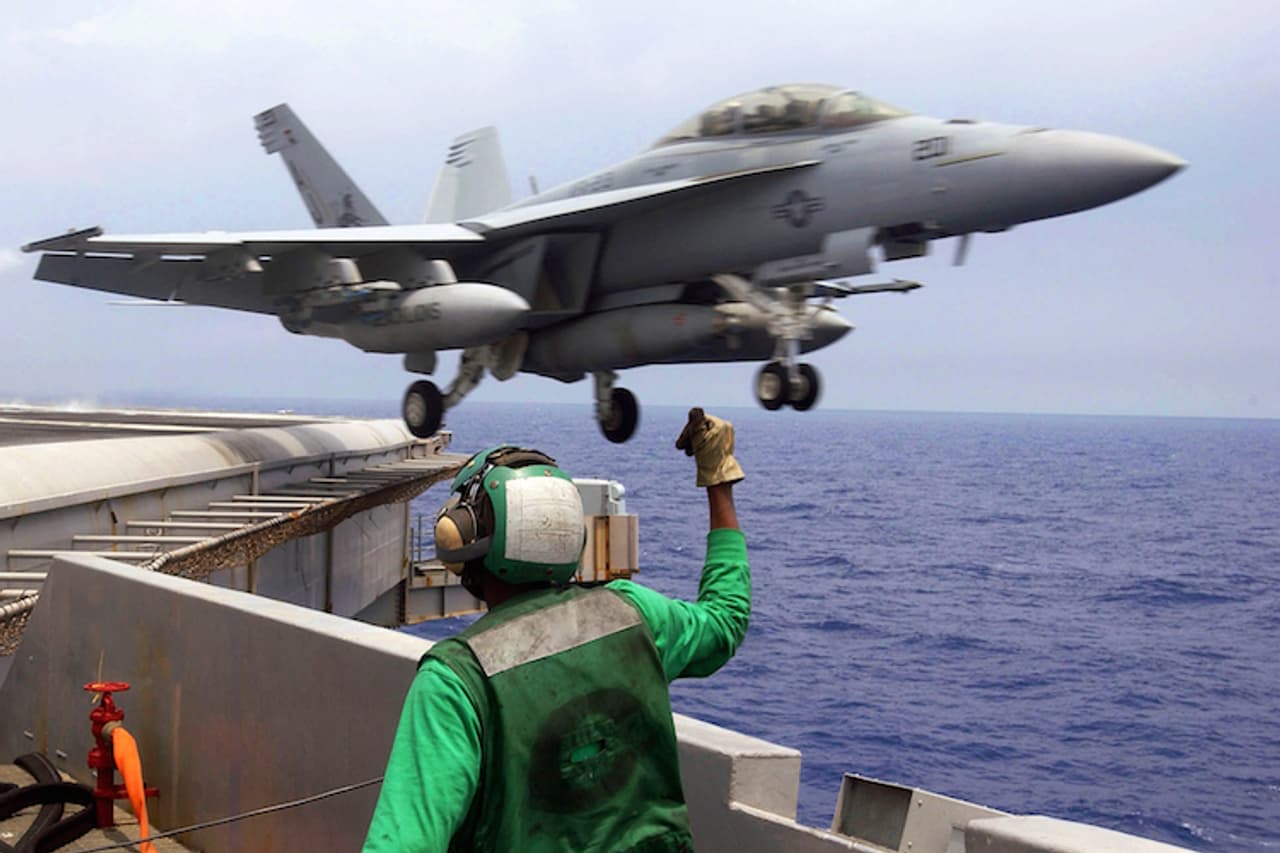
Why drones are not enough in Iraq and Syria
An F-18 like this one carried out the first strike on Iraq this August (PO Jonathan Snyder/US Navy)
Drones are often claimed to offer a simple solution to the problem of how to do work which is, in defence jargon, “dull, dirty or dangerous”.
But as the US lays out its strategy for combating the Islamic State of Iraq and Syria (Isis) however, the limitations of a counter-terrorism approach relying solely on the use of unmanned aircraft are becoming clear.
On Wednesday, US President Barack Obama vowed to strike Isis in both Iraq and Syria if necessary.
The US has been attacking Isis targets in Iraq using a mixture of drones and manned aircraft since early August. Obama said that as well as continuing air strikes on Isis targets, the US would increase its support for local forces in both Syria and Iraq as part of what would be a long counter-terrorism campaign.
More US troops are going to Iraq to train Iraqi and Kurdish soldiers and provide them with intelligence and equipment. US air power will support them. And Washington is going to send more equipment and train more members of Syrian opposition groups.
Obama likened his plan to the US’s efforts to counter extremist armed groups in Yemen and Somalia. But the order of magnitude is different – there have been only six strikes reported in Yemen this year and two in Somalia, while the US has launched more than 150 strikes against Isis in Iraq since August 8.
However, the struggle against Al Qaeda in the Arabian Peninsula (AQAP) in Yemen is an eloquent example of the limitations of hard power. As well as using drones and other weapons including jets and cruise missiles to support the Yemeni military in its counter-terrorism operations, the US has trained and equipped the Yemeni forces. Together the US and Yemen pushed AQAP-affiliated forces out of towns and cities in the southern province of Abyan in 2012.
But with continuing instability in the country, militants have been able to regroup and launch bloody attacks on the security services. Fourteen soldiers were reportedly executed by suspected AQAP militants last month.
In Somalia meanwhile, the US has been fighting the al Qaeda-linked al Shabaab group since 2007, using air power as well as special forces soldiers on the ground and even a warship to bombard militants on the shoreline.
Along with the EU, the US has also been training and equipping a peacekeeping force from African Union countries. But it has only recently been able to deploy soldiers in sufficient numbers to drive al Shabaab from the capital. Even now al Shabaab is able to launch attacks on the heavily guarded centre of Mogadishu seemingly at will.
Even as a means of carrying out air strikes, drones have their limitations.
Douglas Barrie, senior fellow for military aerospace at the International Institute for Strategic Studies, said these are becoming clearer as the military becomes more experienced with unmanned vehicles, and they are increasingly being used in combination with other aircraft.
“For the foreseeable future you’ll have a mix of inhabited and uninhabited [aircraft] fulfilling a variety of roles,” he told the Bureau. Allied forces are already doing this in Afghanistan, he said.
Iraq highlights some of these limitations. US armed drones are designed to loiter over a particular area for hours on end, gathering intelligence and striking at targets when the opportunity arises. But in order for them to have enough fuel to do this effectively the area being orbited needs to be relatively close to the drones’ home base.
Unlike in Pakistan, where the CIA is able to keep its drones across the Afghan border from the areas being targeted, the bases for the drones used to target Isis in Iraq are located elsewhere in the Gulf.
Manned jet aircraft are not affected by the same constraints, which may explain why the US has deployed various conventional jets to fight Isis. These include F-18s operating from an aircraft carrier. They can refuel in flight from a tanker and still carry a significant number of bombs and missiles.
Washington has also been using heavy bombers – most likely the B-1B Lancer, according to Jane’s Defence Weekly. These strategic bombers carry a massive payload of guided bombs, Barrie explained, and are designed to fly across continents. They can patrol at high altitude for hours, waiting to be called on to launch a strike.
Follow Jack Serle on Twitter. Sign up for monthly updates from the Bureau’s Covert War project, subscribe to our podcast, Drone News from the Bureau, and follow Drone Reads on Twitter to see what the team is reading.


